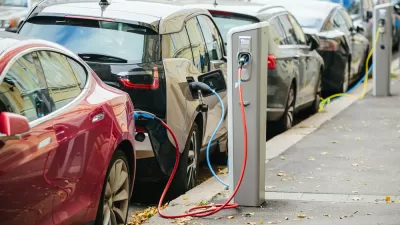Data collection used for planning purposes has traditionally focused on cars, rather than people. So far, innovative transportation technologies seem unconcerned with changing that pattern.

Joe Cortright cautions against the dangers in over-estimating the value of data in planning decisions. Though a believer in using data to inform decision making and problem solving, Cortright reminds us that "sometimes the quantitative data that’s available is too limited to enable us to see what’s really going on." Moreover, "incomplete data can lead us to the wrong conclusions."
Cortright chooses the case study of walkability to examine the shortcomings of traditional planning data. After examining reports of the pedestrian experience in Houston (and similar conditions around the country), Cortright states the problem: "Because we lack the conventional metrics to define and measure, for example, the hardships of walking, we don’t design and enforce solutions or adopt targeted public policies."
Further distorting the focus of planning and engineers is an overabundance of data on car traffic: "we have parking standards, traffic counts, speed studies, and 'level of service standards,'" and "[t]raffic engineers will immediately tell us when a road is substandard, or its pavement has deteriorated, or its level of service has become (or might someday become) degraded."
The implications of Cortright's argument reach into the future, however, and this is where planners have the power to demand more from policy makers. Recall the recent criticism of the city of Columbus' selection for $50 million in grant money from the U.S. Department of Transportation's Smart City competition—awarded for a project proposal that focuses on autonomous vehicles, rather than public, mass transit. Cortright's concern with the priority on self-driving cars and other futuristic technology:
New technology promises to provide a firehose of data about cars, car travel, car delay, and roadways—but not nearly as much about people. This is a serious omission, and should give us pause about the application of “smart” principles to cities and transportation planning.
FULL STORY: The limits of data-driven approaches to planning

Alabama: Trump Terminates Settlements for Black Communities Harmed By Raw Sewage
Trump deemed the landmark civil rights agreement “illegal DEI and environmental justice policy.”

Planetizen Federal Action Tracker
A weekly monitor of how Trump’s orders and actions are impacting planners and planning in America.

The 120 Year Old Tiny Home Villages That Sheltered San Francisco’s Earthquake Refugees
More than a century ago, San Francisco mobilized to house thousands of residents displaced by the 1906 earthquake. Could their strategy offer a model for the present?

Indy Neighborhood Group Builds Temporary Multi-Use Path
Community members, aided in part by funding from the city, repurposed a vehicle lane to create a protected bike and pedestrian path for the summer season.

Congestion Pricing Drops Holland Tunnel Delays by 65 Percent
New York City’s contentious tolling program has yielded improved traffic and roughly $100 million in revenue for the MTA.

In Both Crashes and Crime, Public Transportation is Far Safer than Driving
Contrary to popular assumptions, public transportation has far lower crash and crime rates than automobile travel. For safer communities, improve and encourage transit travel.
Urban Design for Planners 1: Software Tools
This six-course series explores essential urban design concepts using open source software and equips planners with the tools they need to participate fully in the urban design process.
Planning for Universal Design
Learn the tools for implementing Universal Design in planning regulations.
Clanton & Associates, Inc.
Jessamine County Fiscal Court
Institute for Housing and Urban Development Studies (IHS)
City of Grandview
Harvard GSD Executive Education
Toledo-Lucas County Plan Commissions
Salt Lake City
NYU Wagner Graduate School of Public Service





























